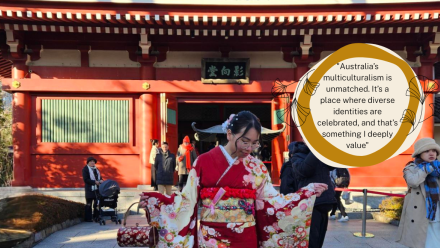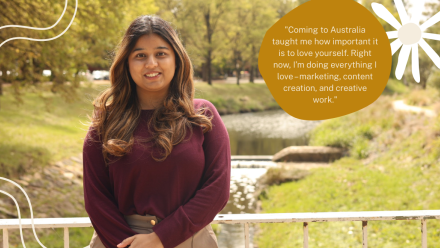Brian Stacey and the Indigenous land rights movement
Brian, you have practised what you preached to us. You managed to help get land rights back for Indigenous people.
In 1980, Brian Stacey was a third-year Bachelor of Anthropology student at ANU.
It was in one of his Anthropology classes where he first met Marcia Langton, a descendant of the Yiman and Bidjaraheritage.
At that time, there was no platform for the rights and interests of Indigenous students at ANU.
With a shared passion for justice, Brian and Marcia worked together to set up the first Indigenous students' group at ANU. It was known as the ANU Aboriginal Support Group and had four members.
Not long after, Brian began hearing reports of a dispute concerning Indigenous people and land rights in Noonkanbah in the remote Kimberley region of Western Australia.
Brian recalls Marcia saying, "We have to start paying attention to what's going on in Noonkanbah."
In 1980, the Noonkanbah Station, the traditional lands of the Yungngora Community, was the scene of an intense political dispute when the state government of the day allowed the American exploration company Amex access to the sacred lands of Noonkanbah to drill for oil.
The Yungngora Community resisted from the onset.
The Daily News noted that it was "the first time" in the history of Western Australia that Indigenous people were "determined to keep outsiders off what they consider is their land".
In 1980, the Yungngora Community and their supporters sat in a dusty Kimberley creek bed, blocking the path of the drilling rigs.
Wanting to help the cause, Brian and Marcia decided to stage their own protest meeting at Albert Hall on Commonwealth Avenue.
Not expecting a big turnout, Brian and Marcia couldn't believe when over 3,000 people came to the meeting.
"It was absolutely packed to the rafters," Brian reflected.
"This was a really important moment for the University."
Sadly, the state government ended up proceeding with the drilling at Noonkanbah.
However, the Noonkanbah dispute became the catalyst for land rights being placed on the national agenda and led to the foundation of the Kimberley Land Council.
Peter Yu, the Vice-President of the University's First Nations Portfolio, was a very youngfield officer in the Land Council at the time of the Noonkanbah dispute.
"They won the battle, but they lost the war," Brian said.
Ever since that time, Brian has dedicated his career to advancing the rights and interests of Australia's Indigenous peoples, particularly to help return their land.
After working for more than 30 years for the Australian Government in various Indigenous Affairs agencies, Brian has worked tirelessly to secure better life outcomes for Indigenous peoples.
Today, Aboriginal and Torres Strait Islander peoples' rights and interests in land are formally recognised in around 60 per cent of Australia's land mass.
By 2031, it is projected to be around two-thirds.
When Brian began his career, Australia's Indigenous peoples had interests in around 10 per cent.
Now it's at 60 per cent.
Not long ago, Brian became reacquainted with some of his former peers at ANU, who often received 'talks' from him about why Indigenous people should get their land back.
They told him, "Brian, you have practised what you preached to us. You managed to helpget land rights back for Indigenous people."
This National Reconciliation Week, Marcia Langton is returning to ANU to speak at a Meet the Author event (now sold out) with Aaron Corn about their new book, Law: The Way of the Ancestors, which challenges readers to consider how Indigenous law can inspire new ways forward for us all in the face of global crises.
Brian believes Marcia deserves her place among the University's most famous alumni.
"She is to be greatly respected. It's been a privilege to know her."


